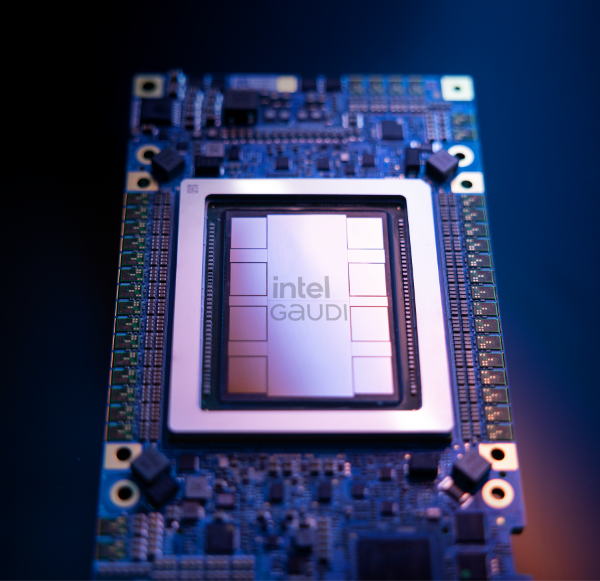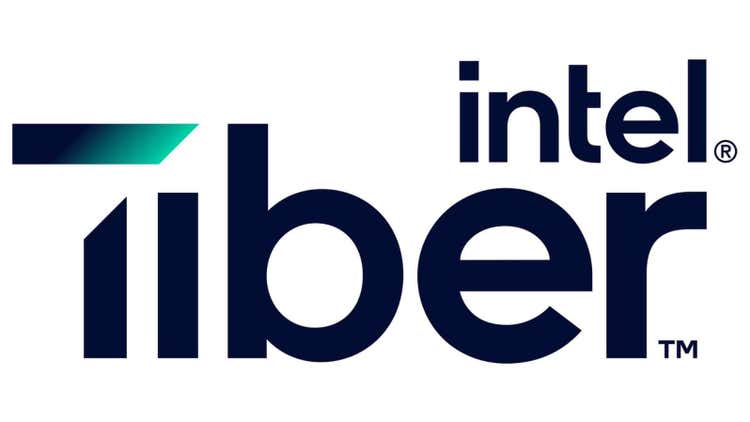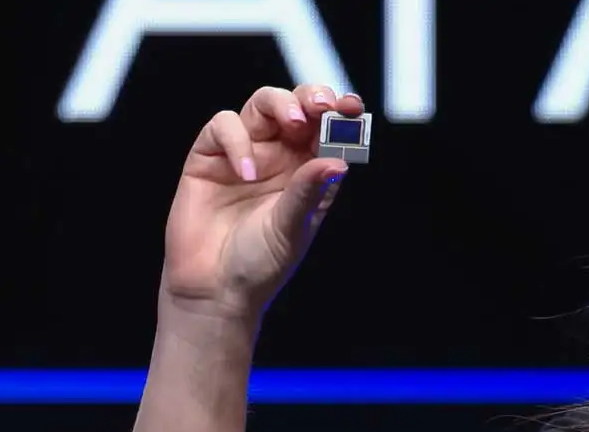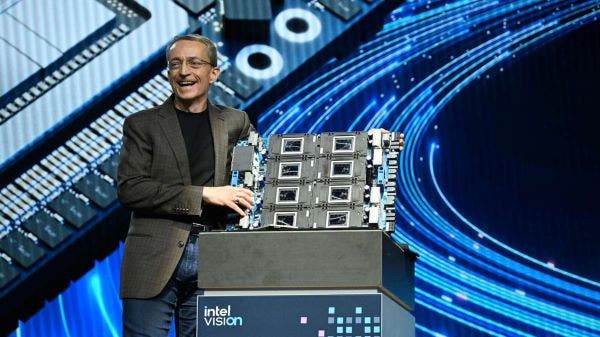8 Big Announcements At Intel Vision 2024: Gaudi 3, Xeon 6, Lunar Lake And More
CRN outlines eight big announcements from this month’s Intel Vision event that reflect the semiconductor giant’s vision for the future of AI computing, where it hopes to play an outsized role through a mix of CPUs, GPUs, purpose-built AI chips, Ethernet solutions and software.

Intel unveiled the next step of its plan to fight Nvidia, AMD and other rivals with several upcoming chips and products for AI and other workloads across data centers, PCs and edge environments at this month’s Intel Vision 2024 event.
Held last week, Intel CEO Pat Gelsinger outlined his vision for the future of AI computing and how the semiconductor giant will play an outsized role, which the company veteran hopes to achieve through a mix of CPUs, GPUs, purpose-built AI chips, Ethernet solutions and software.
[Related: Intel’s 9 Biggest Moves Under Pat Gelsinger In His First 3 Years As CEO]
“Every company is going to become an AI company. Together we'll unleash the power of your data. We’re going to accelerate your productivity. We're going to enable your workforce. We're going to vastly improve the [return on investment] of your technology investments all while making it more sustainable and secure,” he said in his keynote last Tuesday.
“Intel, we were made for moments like this. Together with all of you, we’re going to change the world, again,” he concluded with his hour-and-a-half talk.
Compared to the work Intel is doing now to enable AI and edge applications, the chipmaker’s prior decade was “sort of boring,” Gelsinger said of the time he was gone from the company, serving as a top executive at EMC, then CEO of VMware for a total of 11 years.
“We made PCIe a little bit faster. We made DDR the next increment. We kicked up the thermal envelope a little bit. We added a few more cores, and we said, ‘OK, it's a good chip.’ Boring,” the chief executive boldly said to the audience.
With the rising interest in AI solutions, Gelsinger sees a big change at Intel.
“AI is making everything exciting like we haven't seen [before]. In this period of time, a fundamental drive of computing, the biggest change in technology since the internet, and it's going to reshape every aspect of our business and yours. […] And this becomes the driving force of this expanding semiconductor [total addressable market] from about $600 billion to more than a trillion [U.S. dollars] by the end of the decade,” he said.
What follows are eight big announcements the Santa Clara, Calif,-based company made at Intel Vision 2024, from new details around the upcoming Gaudi 3 AI chip and Intel’s plan to revamp its server CPU lineup with the upcoming Xeon 6 family, to the company’s plans to build an open enterprise AI platform and a new brand name for Intel’s commercial software and services.

Intel Claims Gaudi 3 AI Chip Can Best Nvidia’s H100, Teases Launch With OEMs
Intel said its upcoming Gaudi 3 AI accelerator chip can best Nvidia’s powerful H100 GPU for training large language models and offer similar or, in some cases, better performance than the rival’s memory-rich H200 for large language model inferencing.
At Intel Vision, the semiconductor giant unveiled the performance comparisons and several other details, including OEM support and a reference architecture relying on Ethernet to scale server clusters to more than 8,000 chips, for Gaudi 3.
The Santa Clara, Calif.-based company is hoping Gaudi 3, the successor to Intel’s Gaudi 2 from 2022, will give it a major boost in competition against Nvidia. The rival has dominated the AI computing space with its GPUs and recently unveiled plans to launch much more powerful follow-ups to the H100 and H200 later this year using its new Blackwell architecture.
Intel said air-cooled and liquid-cooled versions of the Gaudi 3 accelerator card will start sampling with customers in the first and second quarters of this year, respectively. It then plans to launch the air-cooled version in the third quarter and the liquid-cooled version in the fourth quarter.
At launch, Gaudi 3 will be supported by Dell Technologies, Hewlett Packard Enterprise, Lenovo and Supermicro, which are expected to receive the chip by the second quarter. The chip will also be made available in the Intel Developer Cloud platform for testing and development.
CRN published an in-depth article on Tuesday about Gaudi 3, its specifications, Intel’s performance claims, reference architectures and software support.

Intel’s Gaudi AI Chips Get Interest From IBM, Infosys And Other Firms
Intel said a growing number of customers and partners, including IBM and Infosys, are exploring or using the company’s Gaudi AI chips for generative AI workloads.
At Intel Vision, the semiconductor giant named 12 companies that are validating, testing or deploying its Gaudi AI chips along with other products for generative AI workloads.
IBM, for example, is “using 5th-Gen Intel Xeon processors for its watsonx.data data store solution and working closely with Intel to validate the watsonx platform for Intel Gaudi accelerators,” according to Intel.
Global consulting giant Infosys, on the other hand, announced that it will add 4th- and 5th-Gen Xeon processors and Gaudi 2 AI chips to its Topaz AI platform as part of a “strategic collaboration.” The Indian company previously announced it would integrate Nvidia’s ecosystem of models, tools, runtimes and GPU systems into Topaz.
Another major company, Germany-based Bosch, is expected to look at Gaudi AI chips to “explore further opportunities for smart manufacturing, including foundational models generating synthetic datasets of manufacturing anomalies to provide robust, evenly-distributed training sets” such as automated optical inspection, according to Intel.
Other large companies backing Intel’s Gaudi efforts include U.S. food and beverage giant IFF, which “will leverage GenAI and digital twin technology to establish an integrated digital biology workflow for advanced enzyme design and fermentation process optimization,” Intel said.
The list includes Bharti Airtel Limited, an Indian multinational telecom services provider that is “embracing the power of Intel’s cutting-edge technology,” which it plans to combine with “rich telecom data to enhance its AI capabilities and turbo charge the experiences of its customers.”
There’s also South Korean tech giant Naver, which is using Gaudi to “develop a powerful large language model for the deployment of advanced AI services globally, from cloud to on-device.” Intel added that Naver “has confirmed Intel Gaudi’s foundational capability in executing compute operations for large-scale transformer models with outstanding performance per watt.”
CtrlS Group, a major data center and manager services provider in Asia, is working with Intel to build an AI supercomputer for India-based customers and scaling CtrlS cloud services for India with additional Gaudi clusters,” according to the chipmaker.
The following companies are also working Gaudi-based solutions, according to Intel:
- Krutrim, an AI computing business owned by Indian ride-sharing provider Ola, which is using Gaudi to “pre-train and fine-tune its first India foundational model with generative capabilities in 10 languages.” The business is “now pre-training a larger foundational model on an Intel Gaudi 2 cluster.”
- NielsenIQ, a U.S. data and analytics firm spun off by market research giant Nielsen, that is using Gaudi to “enhance its GenAI capabilities by training domain-specific LLMs on the world’s largest consumer buying behavior database, enhancing its client service offerings while adhering to rigorous privacy standards.”
- Seekr, a U.S. AI model developer that is running “production workloads on Intel Gaudi 2, Intel Data Center GPU Max Series and Intel Xeon processors in the Intel Tiber Developer Cloud for LLM development and production deployment support.”
- Landing AI, a U.S. computer vision startup is working on a “fine-tuned domain-specific large vision model for use in segmenting cells and detecting cancer.”
- Roboflow, a U.S. startup that is “running production workloads of YOLOv5, YOLOv8, CLIP, SAM and ViT models for its end-to-end computer vision platform.”

Intel Heralds Server CPU Revamp With Xeon 6
When Intel releases its next wave of Xeon server CPUs in the coming months, it will represent a major change not only for the brand but also for how the company competes in the data center, edge and cloud infrastructure markets amid increasing competition.
At Intel Vision, the semiconductor giant revealed an updated brand for Xeon that will take effect with the upcoming sixth generation. Rather than calling the product family 6th-Gen Intel Xeon, it’s called Intel Xeon 6, ditching the generation nomenclature and moving the generation number to the end of the name.
But the bigger change coming to Xeon are the two microarchitecture options, which starts with this year’s sixth-generation lineup. Rather than relying on a single core type for all CPUs in the lineup, as Intel has done in the past, the upcoming product family will consist of processors containing one of two core types: a performance core (P-core) or an efficient core (E-core).
Whereas the Xeon 6 processors with P-cores are optimized to deliver performance for compute-intensive and AI workloads, the ones with E-cores are optimized to deliver efficiency for high-density and scale-out workloads. Both can handle general-purpose work.
The decision to bifurcate Xeon CPUs between two core types is about “delivering flexibility to meet any organization’s diverse efficiency and performance requirements,” according to Kamhout. Intel introduced the idea of P-cores and E-cores in 2021 with the launch of the 12th-Gen Core client processors, many of which include both core types.
The Xeon 6 processors with E-cores will arrive first, launching later this quarter. Formerly code-named Sierra Forest, the processors take advantage of the E-cores to “deliver exceptional efficiency” and bring core counts to new highs, both for Intel and the industry.
The Xeon 6 processors with P-cores will arrive “soon after” the E-core versions, according to the company. Formerly code-named Granite Rapids, these CPUs will serve as the direct successor to the 5th-Gen Xeon processors that launched last year.
CRN published an article on Wednesday about the differences between P-cores and E-cores within the upcoming Xeon 6 processors as well as the P-core’s advantages for AI workloads.

Intel Partners With VMware, SAP, ISVs To Build Open Enterprise AI Platform
Intel said it’s teaming up with VMware, Red Hat, SAP and several independent software vendors to build “an open platform for enterprise AI.”
The semiconductor giant is pushing to develop the open platform as part of its effort to challenge Nvidia, whose proprietary software stack has played a major role in allowing the rival to dominate the AI computing space with its GPUs.
“The industrywide effort aims to develop open, multi-vendor GenAI systems that deliver best-in-class ease-of-deployment, performance and value, enabled by retrieval-augmented generation,” otherwise known as RAG, the company said in a statement.
In addition to working with Broadcom-owned VMware, IBM-owned Red Hat and SAP, Intel said the initiative involves several independent software vendors (ISVs). These include Articul8, a startup spun out of Intel in January that provides a ““full-stack, vertically-optimized and secure generative artificial intelligence platform.”
The other participating ISVs consist of Anyscale, DataStax, Domino, KX Systems, MariaDB, MinIO, Qdrant, Redis, Yellowbrick and Zilliz.
To start out, Intel said it will “release reference implementations for GenAI pipelines on secure Intel Xeon- and Gaudi-based solutions, publish a technical conceptual framework, and continue to add infrastructure capacity in the Intel Tiber Developer Cloud for ecosystem development and validation of RAG and future pipelines.”
The company said it’s looking for more ISVs to participate in the initiative.

Intel’s Commercial Software Efforts Unite Under New Brand: Tiber
Intel revealed that its commercial software solutions and services for cloud, edge, AI and security applications will unite under a new brand called Tiber.
The semiconductor giant said the Intel Tiber portfolio of business solutions is meant to “streamline the deployment of enterprise software and services, including for” generative AI.
Tiber brings together commercial software solutions and services Intel has introduced or gained via startup acquisitions over the last several years. These efforts gained a higher priority when Pat Gelsinger became CEO in 2021, as he outlined for a CRN cover story at the time.
“A unified experience makes it easier for enterprise customers and developers to find solutions that fit their needs, accelerate innovation and unlock value without compromising on security, compliance or performance,” the company said.
The new brand means the following software solutions and services are getting new names:
- Granulate, the data center workload optimization software business Intel acquired in 2022, will now be known as Intel Tiber App-Level Optimization.
- Cnvrg.io, a startup Intel acquired in 2020 that provides a machine learning operations (MLOps) platform, will go by Intel Tiber AI Studio.
- Intel Developer Cloud, a cloud service launched last September that lets developers build, test and optimize AI applications using the latest Intel CPUs, GPUs and Gaudi AI chips, is now Intel Tiber Developer Cloud.
- Intel Trust Authority, a suite of trust and security services that debuted last September with an independent attestation service for confidential computing enclaves, is to be called Intel Tiber Trust Services.
- Intel’s Edge Platform, which is meant to help businesses build, deploy, run, manage and scale edge and AI solutions on standard hardware, is now Intel Tiber Edge Platform.
Intel said customers can “begin exploring the Intel Tiber portfolio starting today, with a full rollout planned for the third quarter of 2024.”

Intel: Lunar Lake CPU Will Give Big AI Performance Boost
Intel revealed that its next-generation Lunar Lake CPUs for laptops will hit more than 100 tera operations per second, more than 45 of which will come from the neural processing unit (NPU).
Shortened as TOPS, tera operations per second has emerged as the primary way to measure a processor’s general performance for AI workloads. This is especially important for the NPU, which Intel and rivals have designed as a low-power engine to offload and accelerate a variety of AI workloads from the CPU and GPU.
The projected 100 or more TOPS represents the combined processing power of Lunar Lake’s CPU, GPU and NPU. That, along with the 45 TOPS from the NPU, would represent a significant boost in AI performance over the first generation of Core Ultra processors, code-named Meteor Lake, which were said to deliver up to a total of 34 TOPS.
The chipmaker added that it expects to ship 40 million AI PCs in 2024 thanks to the more than 230 computer designs that will use its Core Ultra processors this year.
Intel has previously said that Lunar Lake will arrive later this year with a “radically new low-power architecture” that significantly improves instructions per clock and more than triples AI performance on the GPU and NPU to enable “next-level AI performance.” The company also expects to launch Arrow Lake, its first line of desktop processors with an NPU, later this year.

Intel Reveals CPUs And GPUs For Edge Computing
Intel announced new Core and Atom CPUs as well as Arc GPUs for edge computing use cases such as retail, manufacturing and health care.
The company said these new processors will be available by the end of June, adding that the chips will be supported by Intel’s Tiber Edge Platform.
Intel Intro AI-Focused Ethernet Solutions, Including AI NIC
Intel said it’s introducing a variety of AI-optimized Ethernet solutions amid a broader push to support the open connectivity standard for various AI workloads.
These solutions include the Intel AI Network Interface Card (NIC) and systems using Intel’s Gaudi AI chips within the company’s product design groups. These also include AI connectivity chiplets for integration in chip designs as well as several hard and soft reference AI interconnect designs for use by internal design teams and external customers with Intel Foundry.
The semiconductor giant said it’s introducing the products as part of it’s work with the Ultra Ethernet Consortium, a group created by the Linux Foundation last year that seeks develop an open “Ultra Ethernet” solution stack that will address the growing network demands of AI and high-performance computing workloads.